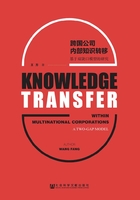
Abstract
As one of the most important means to increase the competitiveness of corporations,knowledge transfer has become a hot topic of theoretical researches. To better understand the knowledge transfer within a MNC around this world,we summarize some core outcomes of knowledge transfer in top management and international business journals during 2000~2014.
Based on this theoretical background,we designed the Two-gap Model and explored some key factors affecting the process of knowledge transfer between headquarters(HQ)and overseas subsidiaries. For example,sender’s motivation,knowledge stock,expatriate’s competence from HQ;receiver’s willingness,absorptive capacity,inpatriate’s competence from overseas subsidiaries. The first gap is called “culture gap”,it contains cultural distance,trust,and teamwork. The other gap is called “communication gap”,it contains language barrier,shared vision and information technology. The purposes of our research are offering a dynamic view of knowledge transfer within a MNC and depicting how to overcome knowledge gap between HQ and overseas subsidiaries.
In the context of the above discussion,this book has three objectives. First,it aims to help the better comprehension of international knowledge transfer within a MNC. So it tried to find various factors including internal and external ones though a comprehensive review of top management and international business journals from 2000 to 2014. The literature review successfully identified 12 key determining factors of international knowledge transfer. Second,based on the identified key factors,this study will develop a conceptual model(Two-gap Model),explaining the intra-MNC’s knowledge transfer,which is more concise and comprehensive than the Knowledge Transfer Analysis(KTA)framework. Third,based on the Two-gap Model,this research is going to put forward several hypotheses which depict how to reduce knowledge gap between HQ and overseas subsidiaries.
We chose these 12 factors as independent variable to analyze,developed 12 hypotheses and set out to prove them whether has impact on knowledge gap(dependent variable),this will become the value of this book. In this study,the research object is the knowledge transfer from HQ to overseas subsidiaries,and the scope of empirical analysis is the foreign subsidiaries operating in China. Thus,the MNCs for this study consisted of Chinese-foreign joint ventures and wholly foreign-owned enterprises in China. The data for this study were collected in Wuhan city which locates in middle area of China. The leader of each company then distributed and collected the questionnaire. Some questionnaires were distributed and collected by E-mail. The data were collected from July to September in 2015. After collecting data,the internal reliability was assessed. The convergent and discriminant validities were also examined using exploratory factor analysis. Then,hierarchical regression analyses were conducted to test hypotheses with summated scales for dependent,independent variables.
Based on the results,we drawn the following conclusions. First,the hypothesis 5 was supported. We confirmed that absorptive capacity as receivers’ factors plays an important role in the transfer of knowledge between the HQ and overseas subsidiaries of MNCs. Second,the hypotheses 7 and 8 were supported. we found that through reducing “communication gap”,it has a positive impact on the knowledge transfer,such as language barrier,has a negative impact on reducing knowledge gap;shared vision,has a positive impact on reducing knowledge gap. Third,the hypotheses 11 and 12 were supported. we found that through reducing “culture gap”,it has a positive impact on the knowledge transfer,such as trust and teamwork each has a positive impact on reducing knowledge gap.
Although our research suggests that knowledge transfer provides a platform for basic understanding between HQ and overseas subsidiaries,it is unclear how politic factors affect them. We hope these different dimensions of knowledge transfer also would be paid more and more attention in the future. Our findings echo these concerns and caution managers to consider both communication gap and culture gap as they refine the knowledge transfer mechanism in their MNC network. Finally,we strongly believe that the Two-gap Model could help MNC’s knowledge transfer,and the key factors are applicable to any types of MNCs.
Keywords:knowledge transfer,MNCs cultural difference,communication gap,Two-gap Model